Ban the Bizarre: China's New Architecture
New guidelines on urban planning deem the construction of “bizarre” or “odd-shaped” buildings as forbidden, instead calling for buildings that are “economic, functional and aesthetically pleasing.”
In one of the most intriguing moves from the Chinese government that I’ve heard in awhile, “weird architecture” has been banned. New guidelines on urban planning deem the construction of “bizarre” or “odd-shaped” buildings as forbidden, instead calling for buildings that are “economic, functional and aesthetically pleasing.” Odd, right? Ironically the ban on the bizarre is fairly peculiar in itself. It took a Google and a momentary debate for me to believe in this story at all. Like, really China? Really?So to make sense of the nonsensical, let’s consider the context. Alongside China’s recent economic boom, the construction of unique buildings has increased exponentially, so much so the country has been dubbed by CNN Style as an “architect’s playground.” China has become host to numerous eye catching and daring architectural projects, as well as producing various ‘copycat buildings’ - replicas of famous monuments from around the world. These include, but are not limited to, these rather fantastic specimen:
WHAT THE DUCK:
[caption id="attachment_7679" align="aligncenter" width="976"]
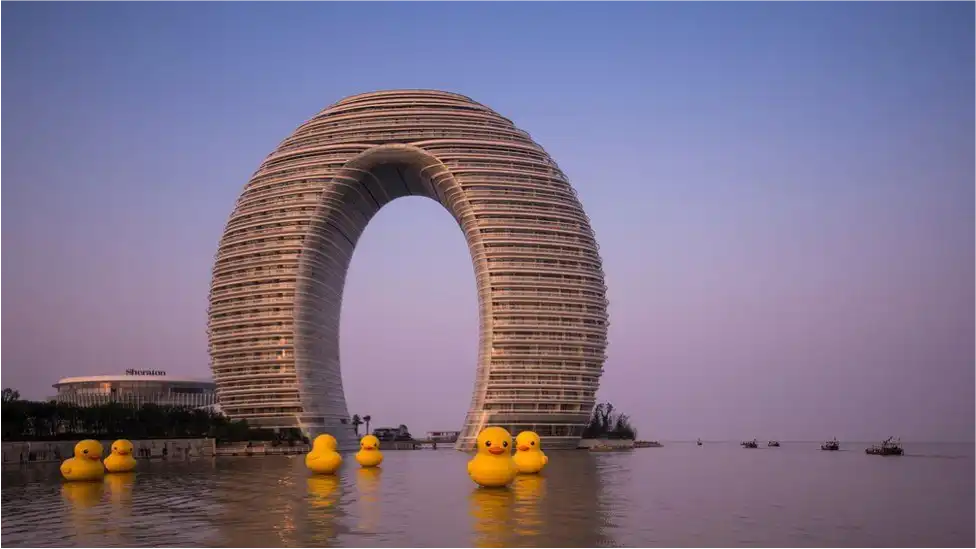
Photo Credit: BBC[/caption] The Sheraton Hot Spring Resort on Taihu Lake in Huzhou was designed by Architect, Ma Yansong, and despite being distractingly guarded by rubber ducks, actually pays homage to the traditional bridges that are found in old Chinese paintings.
Quali-TEA:
[caption id="attachment_7680" align="aligncenter" width="975"]
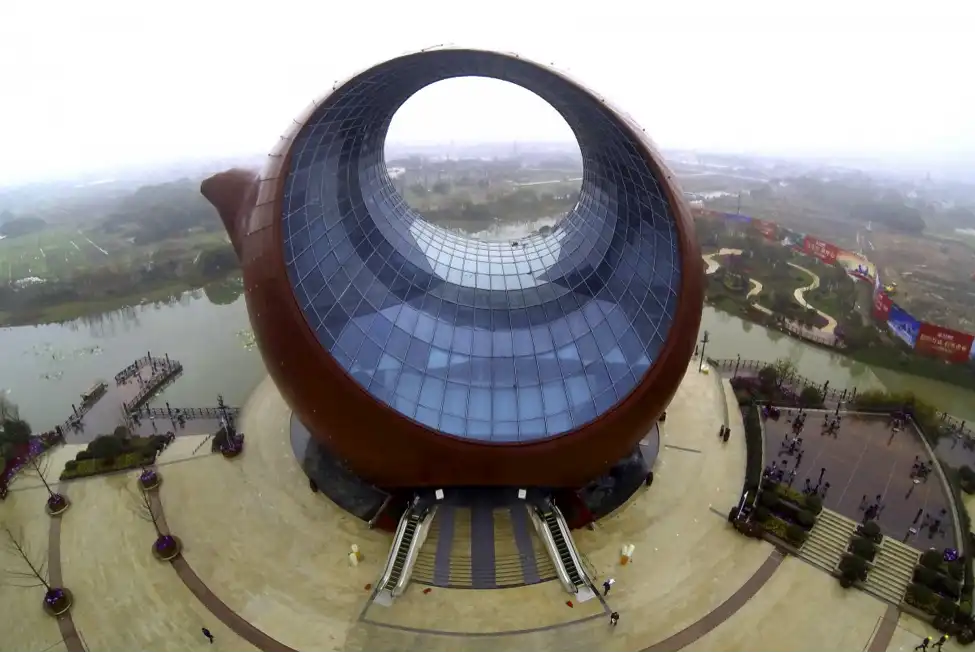
Photo Credit: Business Insider[/caption] Located in Jiangsu province, a tourist information centre was inspired by the clay teapot culture in the area. And as if a 10 story kettle isn't awesome enough, it actually rotates. I repeat, this beauty spins.
ARE YOU YOLKING?
[caption id="attachment_7681" align="aligncenter" width="976"]
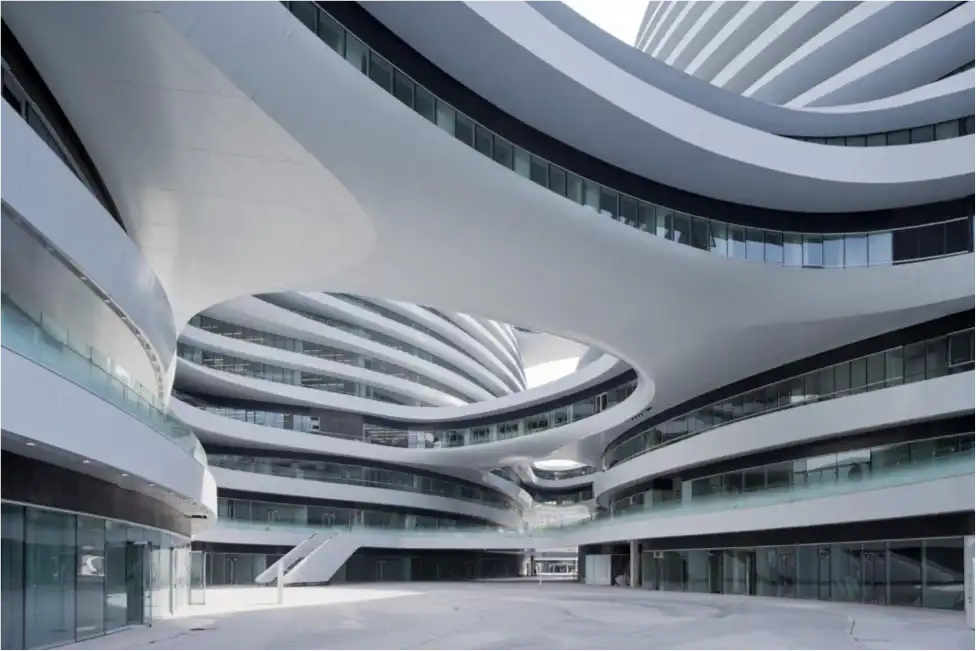
Photo Credit: Business Insider[/caption] A retail and office complex in Beijing, Galaxy SOHO, is comprised of four, swirling egg shapes. The concept is that there are no sharp edges or corners, says the Architect, whom it would seem achieved that to some egg-cellence.
KEEP YOUR PANTS ON:
[caption id="attachment_7682" align="aligncenter" width="976"]
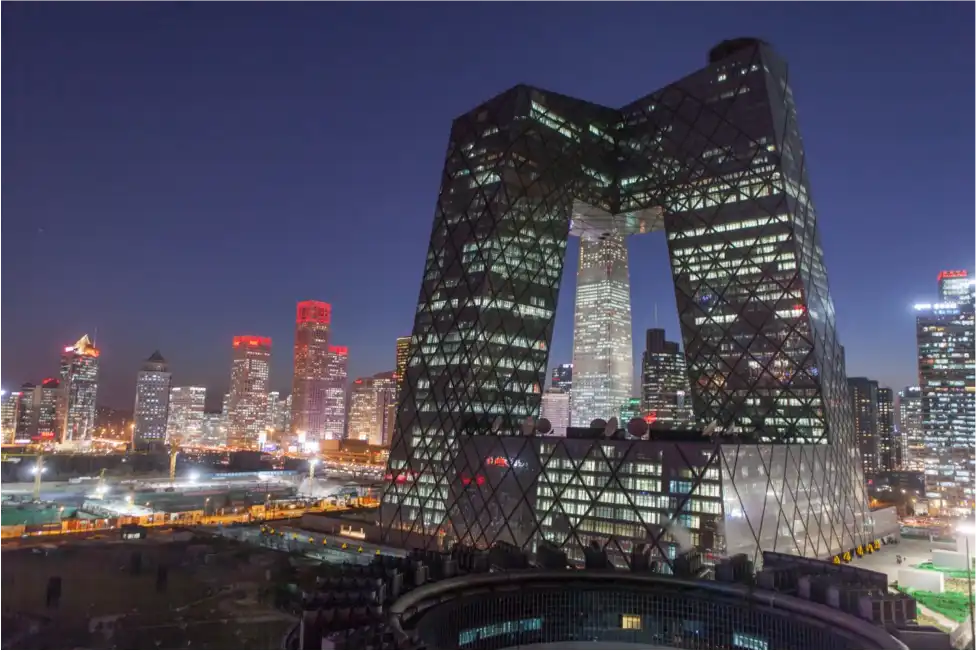
Photo Credit: Business Insider[/caption] The CCTV Headquarters in Beijing are nicknamed “Big Pants” for their trouser-like appearance. They are also an example of what not to do, building-wise. President Xi Jinping specifically called out the $900 million towers in 2014 and they have repeatedly received criticism.
TOUCH DOWN IN LONDON TOWN:
[caption id="attachment_7683" align="aligncenter" width="976"]
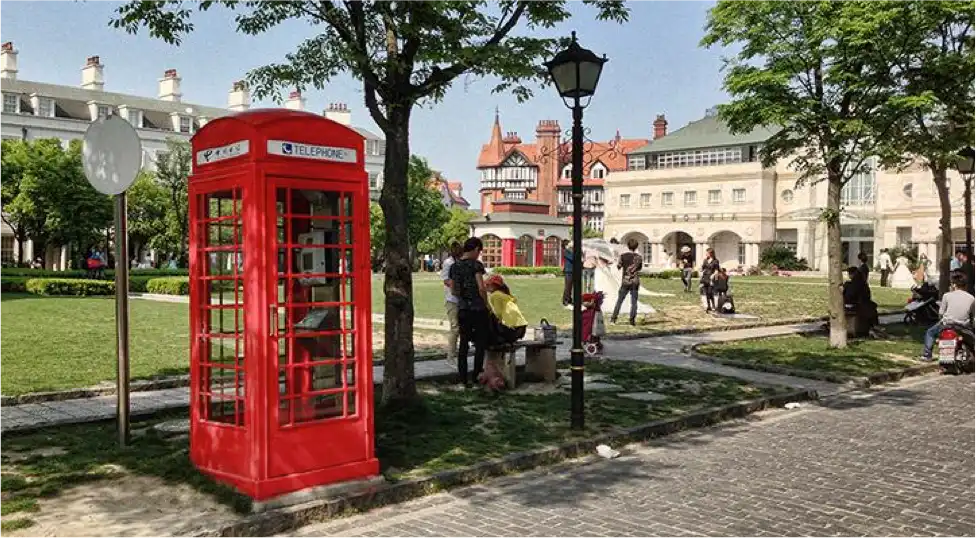
Photo Credit: Trip Advisor[/caption] The largely abandoned British-themed gated community built for 10,000, Thames Town, can be found in Shanghai and is one of the many replicas. The New York Times actually states China is home to at least ten White Houses, three Arcs de Triomphe and one Eiffel Tower. Wowzas. However, while it is fun (or not fun, depending on your taste in puns) to list the more out-there creations, the reality is these will be the last buildings on our lists for an indefinite amount of time. According to World Architecture News, the document states that “there will be a greater emphasis on prefabricated buildings going forward, and there will be a crackdown on designs or construction techniques it perceives to be wasteful, impractical, expensive, or aesthetically displeasing.” Apparently the government is even planning on using satellites to monitor “urban sprawl” and to keep a lookout for companies breaking the new rules and additionally, in the next five years, illegal structures will be removed. That really is pants. The official reasoning behind the ban surround concerns to do with rapid urbanisation, like air pollution, safety and traffic jams. The prefabricated structures (which are set to be 30% of new buildings within the decade) should supposedly help ensure quality and lower housing costs. But overall, the new mandate discusses both function and form, seeming to reach beyond just addressing quality of life. In fact this recent ban ties in with efforts to revive traditionality and keep foreign influences at bay. With the ongoing crackdown on corruption and fears of an economic slowdown, this is all starting to make sense. The policy aims to bring a more uniform appearance to China’s cityscapes, which is reminiscent of the Mao era, when design was considered an unnecessary extravagance. More than past leaders, Xi has promoted nationalism and strayed away from Western ideas. (The propaganda value of architecture being something the Communist Party has been historically aware of.) This latest law seems to be an effort to solidify the Chinese government’s larger message - quite literally - in concrete and stone.This article was written by Stephanie Bailey . Please send an email to managing@oncenturyavenue.com to get in touch. Photo Credit: Lily Mark